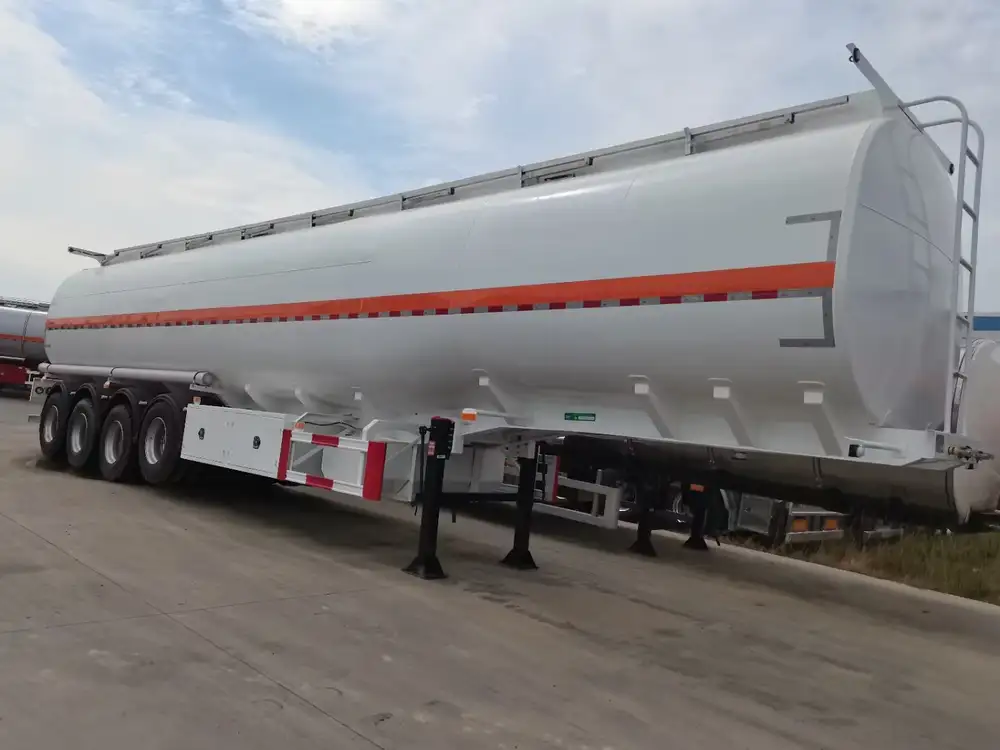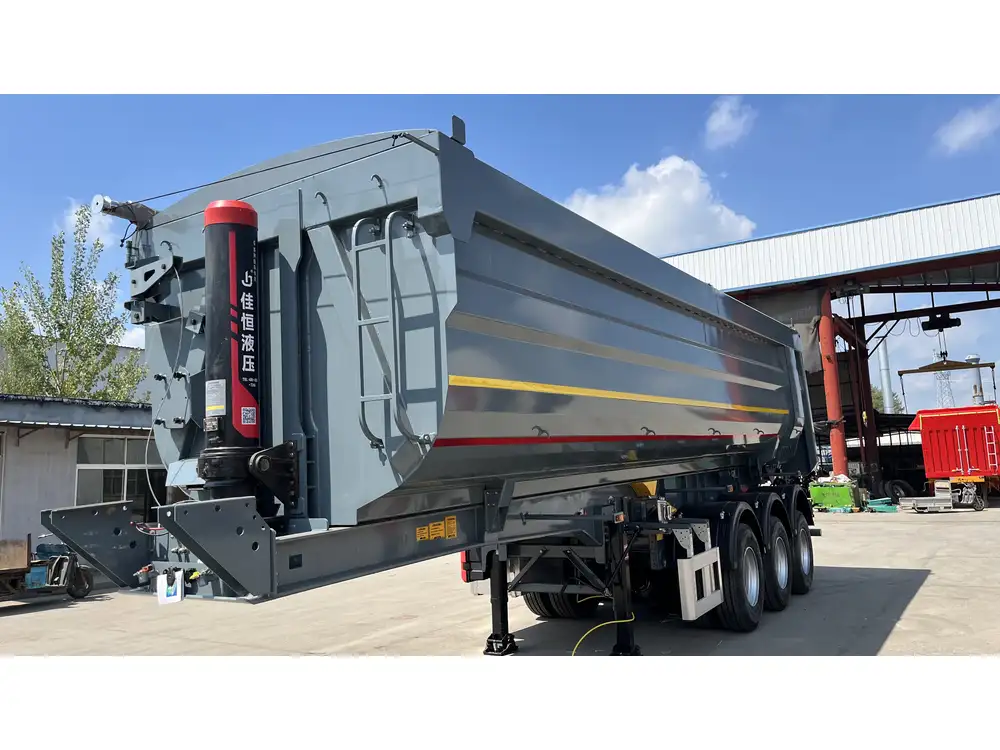When it comes to the transportation industry, understanding the weight of your semi-trailer is paramount. This knowledge not only ensures compliance with regulations but also impacts safety, fuel efficiency, and overall operational costs. Here, we delve into the variables affecting semi-trailer weight, how to accurately measure it, and why it is essential for owners and operators alike.
What Determines the Weight of a Semi-Trailer?
1. Trailer Type
The weight of a semi-trailer can vary significantly based on its design and intended use. Here’s a breakdown of different semi-trailer types and their average weights:
| Trailer Type | Average Empty Weight (lbs) |
|---|---|
| Flatbed | 4,000 – 6,000 |
| Dry Van | 10,000 – 15,000 |
| Refrigerated Van | 12,000 – 20,000 |
| Tanker | 10,000 – 15,000 |
| Lowboy | 14,000 – 20,000 |

2. Construction Materials
The choice of materials used in trailer construction significantly influences weight. Common materials include aluminum, steel, and composite materials. Barriers like aluminum reduce weight but may increase costs, while steel tends to be heavier but offers higher durability.
3. Cargo Capacity
The design load capacity of a semi-trailer, often defined by its Gross Vehicle Weight Rating (GVWR), directly affects its operational weight. These ratings determine how much weight a trailer can safely carry, thus influencing its overall weight.
4. Dimensions and Specifications
The length, width, and height of a semi-trailer contribute to its overall weight. Longer trailers may weigh more due to additional materials, whereas more compact designs tend to be lighter.

5. Accessories and Customizations
Many semi-trailers are equipped with various accessories like additional axles, loading ramps, or specialized equipment that add to their overall weight.
How to Accurately Measure Your Semi-Trailer Weight
Step 1: Gathering Equipment
To ascertain the precise weight of your semi-trailer, you will need access to a certified scale. These can usually be found at truck stops, weigh stations, or dedicated facilities.

Step 2: Weighing the Trailer
Unloaded Weight Measurement: Start by weighing your semi-trailer when it is empty. This measurement is crucial for understanding the base weight before you add cargo or other items.
Loaded Weight Measurement: Next, load your trailer with your intended cargo. Once fully loaded, weigh the trailer again.
Calculating the Payload Weight: Subtract the empty weight from the loaded weight to obtain the total payload. This data is essential to determine if you are within legal limits.
Step 3: Understanding Weigh Stations
Many jurisdictions require trucks to stop at weigh stations to ensure compliance with weight regulations. Familiarize yourself with the local laws governing total vehicle weight, as penalties for overloading can be severe.
Legal Weight Limits for Semi-Trailers
Every state has specific regulations regarding the maximum permissible weight for semi-trailers on public roads, often influenced by federal rules:
Federal Bridge Formula: A mathematical formula used to determine the maximum weight a vehicle can legally carry on the Federal highway system. This formula considers the number of axles and the distance between them.
Gross Vehicle Weight (GVW): The combined weight of the vehicle, trailer, and cargo. Generally, the maximum weight limit for semi-trailers is 80,000 lbs under federal law, but this can vary by state and local regulations.
Single and Tandem Axle Limits: Distinct weight limitations apply to single and tandem axles, with single axles typically not exceeding 20,000 lbs. Tandem axles have a combined maximum limit closer to 34,000 lbs.

Table: Legal Weight Limits by Configuration
| Axle Configuration | Maximum Weight (lbs) |
|---|---|
| Single Axle | 20,000 |
| Tandem Axle | 34,000 |
| Three Axles | 42,000 |
| Four or more Axles | 50,000 plus based on the Bridge Formula |
Implications of Overloading
1. Safety Risks
Overloading a semi-trailer poses considerable safety risks, including reduced braking efficiency, increased stopping distances, potential tire blowouts, and compromised vehicle control.

2. Legal Consequences
Transporting loads that exceed legal weight limits can lead to hefty fines, delayed shipments, and damage to your business reputation.
3. Increased Operating Costs
Higher fuel consumption is a common consequence of operating an overloaded trailer. Trucks may require more power to move, resulting in additional fuel expenses and increased wear on engine components.
Maintenance and Weight Considerations
Regular maintenance of your semi-trailer directly influences its ability to handle weights safely and efficiently. Consider the following factors:
Tire Maintenance: Ensuring proper tire inflation and condition can prevent blowouts and improve fuel efficiency. Underinflated or worn-out tires can lead to dangerous situations, particularly under high loads.
Brake System Checks: A properly functioning brake system is essential for safely managing your trailer’s weight. Regular inspections and prompt repairs are crucial.
Suspension System Integrity: The suspension system plays a vital role in weight distribution and handling. An effective suspension system ensures that weight is evenly distributed, enhancing vehicle stability and performance.

Conclusion
Being informed about the weight of your semi-trailer and the factors that influence it is integral for any operator in the transportation industry. Knowledge regarding weight regulations not only safeguards against legal repercussions but also promotes safety and efficiency.
Utilizing the abovementioned strategies for weighing your trailer, associating the various types of trailers with their average weights, and understanding the ramifications of weight limits can empower operators to make informed decisions. With these insights, stakeholders can efficiently manage their semi-trailer fleets, ensuring optimal load capacities and adherence to operational guidelines.
As you drive forward in the semi-trailer manufacturing and logistics industry, remember that meticulous attention to trailer weight considerations serves as a critical pathway to driving operational excellence, enhancing safety, and ensuring compliance in an ever-evolving transport landscape.



